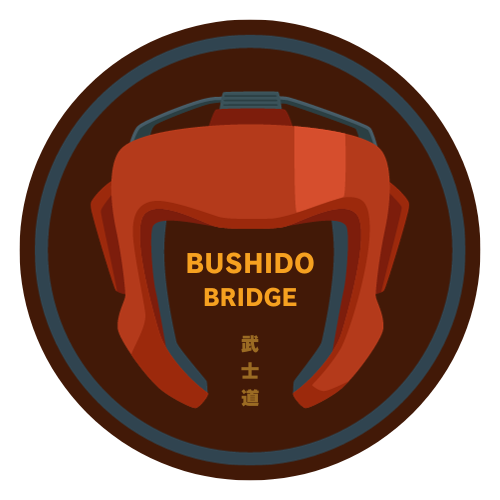HAND COMBAT
Hand striking martial arts encompass a diverse range of disciplines, emphasizing the art and science of striking techniques using hands, elbows, knees, and feet. Examples include traditional Boxing, Karate, Muay Thai, Taekwondo, each bringing a unique approach to deliver powerful, accurate strikes while incorporating defensive maneuvers. Practitioners develop physical strength, coordination, mental focus, and strategic thinking as they refine their ability to execute and defend against potent strikes.
Boxing has ancient origins and can be traced back to various civilizations. However, the modern form of boxing, as a regulated sport with specific rules and guidelines, emerged in England during the 18th and 19th centuries. Boxing, often referred to as "the sweet science," is a captivating and strategic combat sport where two opponents engage in a dynamic interplay of punches, footwork, and defensive maneuvers within the confines of a squared ring. Beyond the raw power of punches, the true artistry lies in the precision of movement and the mental acumen required. It's a disciplined dance that demands both physical prowess and strategic thinking, showcasing the delicate balance between offense and defense. The rhythmic exchange of blows and the unwavering determination of the fighters elevate boxing to an art form, transcending mere athleticism to embody the essence of "the sweet science" – a captivating spectacle of skill, finesse, and resilience.
BOXING (Various Cultures)
Founded in the 17th century in the southern part of China, Wing Chun emphasizing quick and efficient hand combat techniques designed for close-quarters engagements. The system places a strong emphasis on the use of both hands working together in a coordinated manner. Wing Chun practitioners utilize straight punches, rapid strikes, and close-range trapping techniques to overwhelm opponents. The "centerline theory" is a key principle, focusing on controlling the centerline of an opponent's body for strategic advantage. Hand techniques often involve rapid and economical movements, with an emphasis on deflection, redirection, and simultaneous attack and defense. The training in Wing Chun enhances sensitivity, allowing practitioners to respond swiftly to an opponent's actions, making it a formidable martial art for hand-to-hand combat.
WING CHUN (CHINA)
Shotokan Karate, originating in Okinawa and refined by Gichin Funakoshi in early 20th-century Japan, is distinguished by its strong emphasis on hand combat techniques at long range. The style, deeply rooted in traditional martial arts, showcases a repertoire of powerful and linear hand movements, including straight and reverse punches, blocks, and strikes. The disciplined execution of these techniques is emphasized through stable wide stances and precise body mechanics, reflecting Funakoshi's vision of karate as a means of self-improvement and self-defense. The practice of kata and kumite further refines Shotokan's hand combat, offering practitioners a holistic approach to mastering the art's distinctive and effective hand techniques. Today, Shotokan Karate stands as a globally recognized martial art, celebrated for its focus on disciplined hand-to-hand combat within the broader context of Japanese karate traditions.
Shotokan Karate (Japan)
Kyokushin Karate (Japan)
Kyokushin Karate, founded by Masutatsu Oyama in the mid-20th century, has its origins in Japan and is renowned for its intense and full-contact approach to training at close range with a more squared stance. In Kyokushin, hand combat plays a vital role, characterized by robust, straightforward techniques designed for practical application in real-world scenarios. The style places a strong emphasis on powerful punches, such as the oi-zuki (lunge punch) and gyaku-zuki (reverse punch), as well as devastating strikes and open-handed techniques. Kyokushin practitioners often engage in rigorous sparring sessions and conditioning drills, pushing the limits of physical endurance. The hand combat aspect is integrated into kata (pre-arranged forms) and kumite (sparring), reflecting the style's commitment to realistic and effective hand-to-hand combat. Kyokushin Karate's reputation for tough, full-contact training sets it apart as a formidable martial art with a global presence.
Muay Thai, the traditional martial art of Thailand, is renowned for its extraordinary emphasis on a diverse range of striking techniques, showcasing both devastating elbow strikes and intricate hand combat. Celebrated as the "Art of Eight Limbs," Muay Thai incorporates fists, elbows, and forearms in its comprehensive arsenal of limb attacks. A distinct focus on clinch work within Muay Thai enables fighters to skillfully integrate hand and arm control, executing powerful punches like the cross and hook alongside the impactful spinning elbows and close-range maneuvers. The art's unique approach to hand and arm combat shines through its strategic use of the clinch, complementing the precision, speed, and adaptability emphasized in training. Muay Thai stands as a formidable striking discipline, blending the artistry of hand combat with the lethal effectiveness of elbow strikes, contributing to its global acclaim and a rich legacy in martial arts.
MUAY THAI (THAILAND)
Dambe, a traditional martial art with origins in West Africa, particularly among the Hausa people, has a historical lineage spanning many years. While pinpointing its precise founding date is challenging, Dambe has ancient roots deeply intertwined with cultural practices. This indigenous martial art, characterized by its distinctive one-handed striking and unique footwork, has evolved over centuries to become a significant part of West African tradition. Dambe's enduring legacy speaks to its historical importance and cultural significance in the region.
